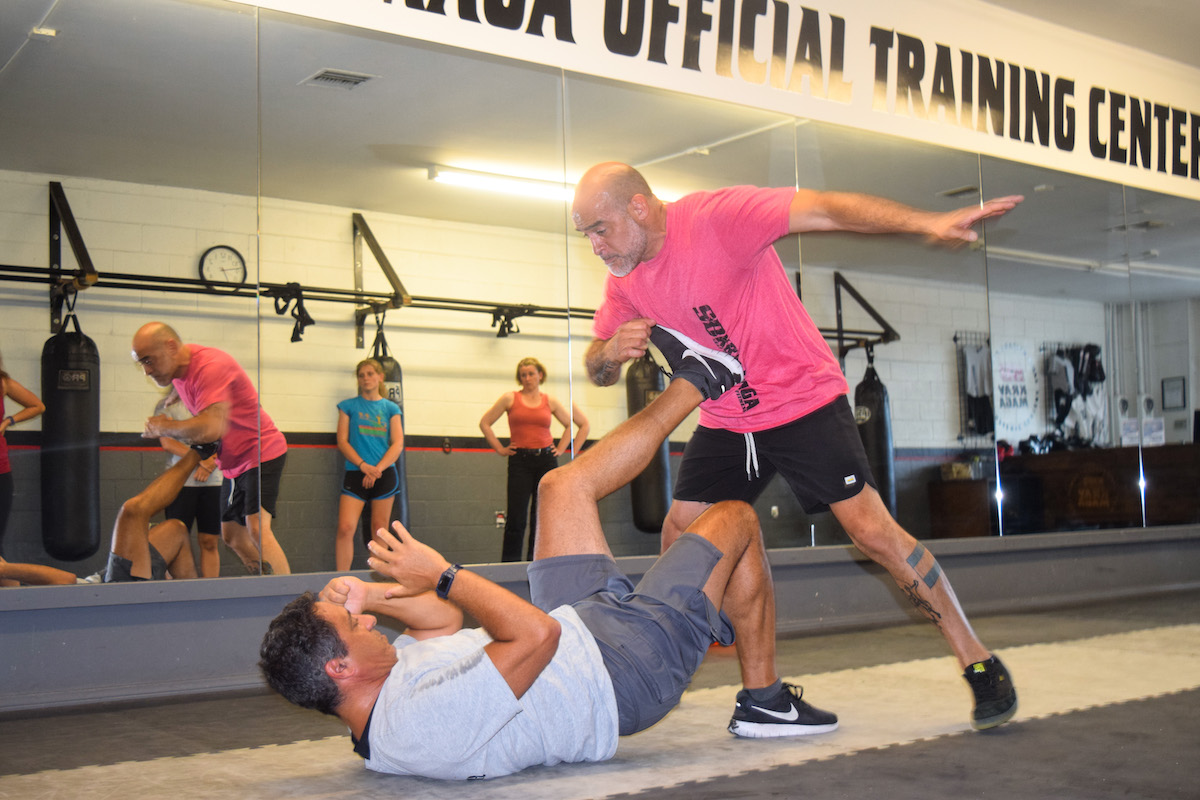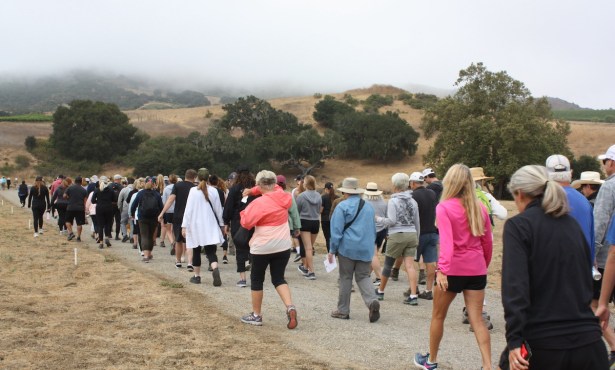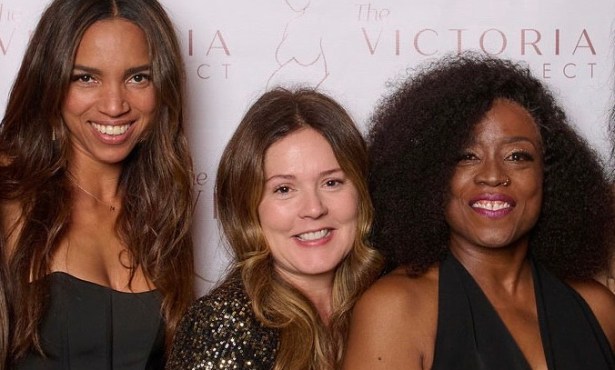Santa Barbara Krav Maga Preps for Real-World Dangers
‘Survival’ Self-Defense System Teaches How to Avoid Conflict and Defend Against Attackers

In today’s world, it helps to be prepared for anything.
What would you do if an assailant were to burst into your workplace, or a grocery store, or your home? Would you trust yourself to be able to fight them off?
Dating back to 1930s Bratislava — in what was then known as Czechoslovakia — a technique, Krav Maga, was developed to arm normal everyday Jewish citizens with the confidence and skills necessary to defend themselves during the brutal early Nazi occupation in the ghettos of Eastern Europe. Its founder, Imi Lichtenfeld, the son of a detective and chief instructor for police, combined his training in boxing, judo, wrestling, swimming, and gymnastics to create a “self-defense survival system” that could be used by undersized and oppressed communities to fight back against their oppressors, or as he put it, “so that one may walk in peace.”
Today, this form of self-defense has proved so effective and practical that it is widely used in the Israeli military and special forces training as the premier form of preparation for hand-to-hand-combat.
Here in town, Pedro Sanchez of the Santa Barbara Krav Maga Family Self-Defense Center in Old Town Goleta has been training and passing on his knowledge to locals for the last 12 years, teaching the reality-based self-defense techniques to everybody from college students to parents looking to feel safe in any situation.
Sanchez first got his start in capoeira and jiu-jitsu before discovering Krav Maga in 2003. After studying under his master, Beau Durocher, Sanchez began instructing at Beach Cities Krav Maga in Orange County, before opening another location in Yorba Linda. In 2011, Sanchez branched out to open his own center in Santa Barbara.
One of the core tenets of Krav Maga’s training philosophy, he says, is to avoid conflict at all costs. “The biggest thing we always say is to never be a hero. Never do that,” he said. “Always comply; always do the best you can. Your job is to go home safe.”
During a weekday session, the sweaty gym is alive with activity. A group of mostly women, ranging in age from their late teens to early sixties, warms up while Sanchez and student instructor David Ashamalla prepare the day’s training: ground work, and how to create space against an attacker who has the better position and may be stronger. He splinters the group off into pairs, with one as the attacker and another on the ground.
Recent high school graduate Kelly Bowdle and bank worker Sarah Duncan are among the women in today’s class. Both joined to learn how to defend themselves in scary situations; Bowdle hopes to travel abroad, and Duncan wants to be able to feel safe when jogging alone at night.
Sign up for Indy Today to receive fresh news from Independent.com, in your inbox, every morning.
“I think a lot of it is like when you’re alone, just being aware of what’s around you,” Duncan said.
Much of Krav Maga’s training revolves around recreating familiar and realistic scenarios, the types of conflicts people actually find themselves in most often. “We talk a lot about that. The reality of like, ‘Hey, what is a real attack?’” Sanchez said.
In real-life scenarios, he says, even the most effective martial arts training typically goes out the window. Krav Maga prepares people for the worst situations, when the chips are down and the only goal is survival. It’s in these situations where people really grow and find confidence in themselves.
“I think the best thing you can learn is that you’re not made of glass; that you know you can fight if you absolutely had to; that you know that there’s no quit in you,” he said.
Part of that is using intuitive movements as defensive maneuvers, like the instinct to protect your neck when an attacker attempts a choke or stranglehold. In Krav Maga, you go with that instinct, bringing your hands up to displace the attackers’ hands and create an opportunity to breathe.
Even though these real-life scenarios can be scary, Sanchez said it’s important to recreate both the movements and the intensity of a real conflict in order to trust that you would respond. “If this is a confrontation, that’s a very scary place to be. God forbid somebody was to attack you,” he said. “But if you don’t practice that, if you don’t go, ‘Where am I with that?’, then what are you going to do if this ever happens?”
That includes going full speed and pushing beyond the point people normally would quit to show them they always can fight harder. “You either want to cry, throw up, or leave, but you just keep fighting, and eventually it all comes together and you get through it.”
And while Krav Maga instructors will tell you to use any means necessary to create space and get away from an attacker — biting, scratching, clawing, kicking, or palm strikes to the eyes, nose, mouth, or groin — the main survival tactic will always be situational awareness to avoid unnecessary conflict.
“That situational awareness is the best thing, being aware of your surroundings,” he said. “If you feel like that hair on the back of your neck is going off, it is. You should feel that and you should leave. You should just get out of there for now. It’s better to be safe than sorry.”
S.B. Krav Maga Family Self-Defense Center offers unlimited monthly training ranging from $99 to $150 a month; the first drop-in class is free. For more info, see sbkravmaga.com.
Support the Santa Barbara Independent through a long-term or a single contribution.



